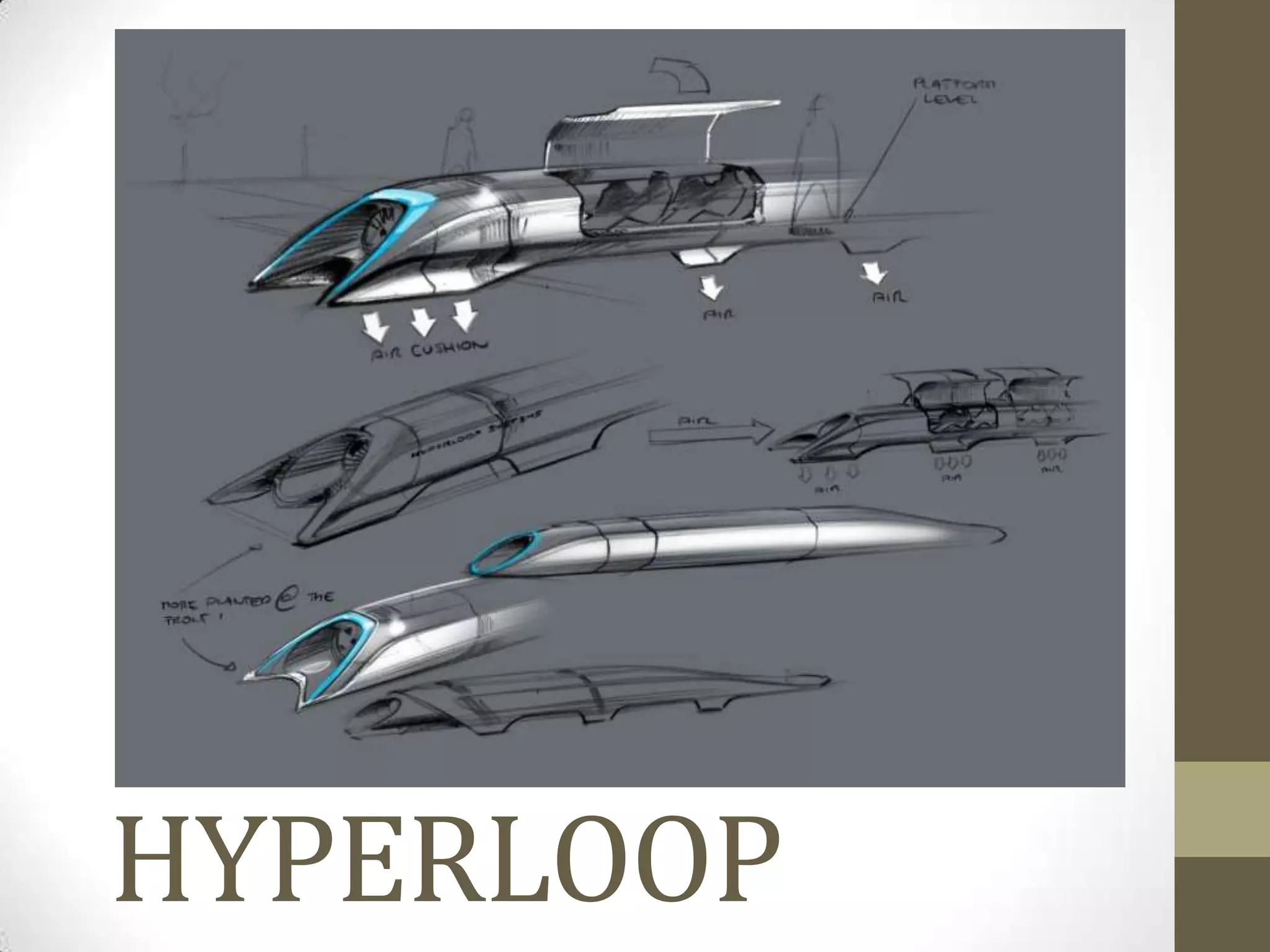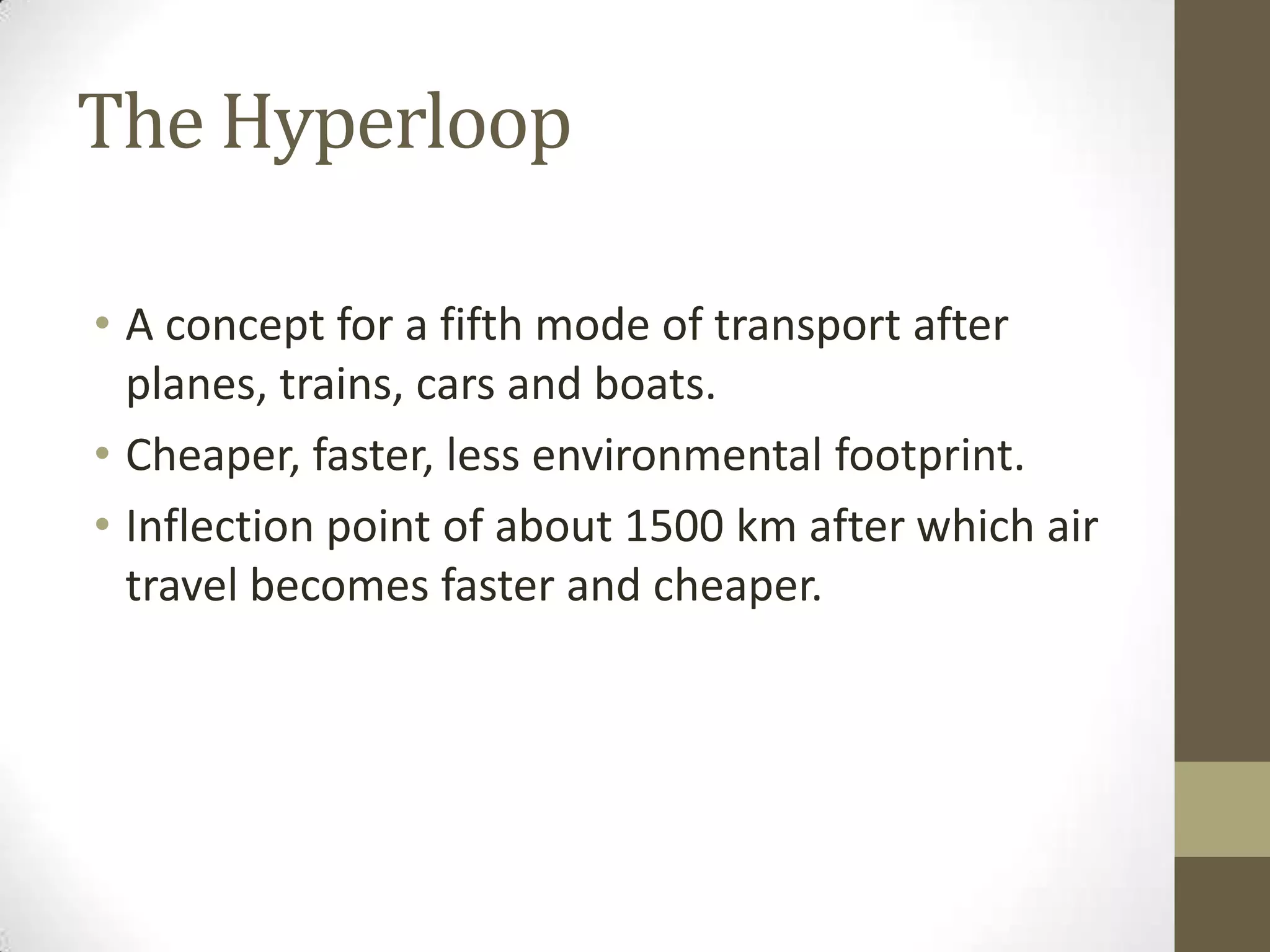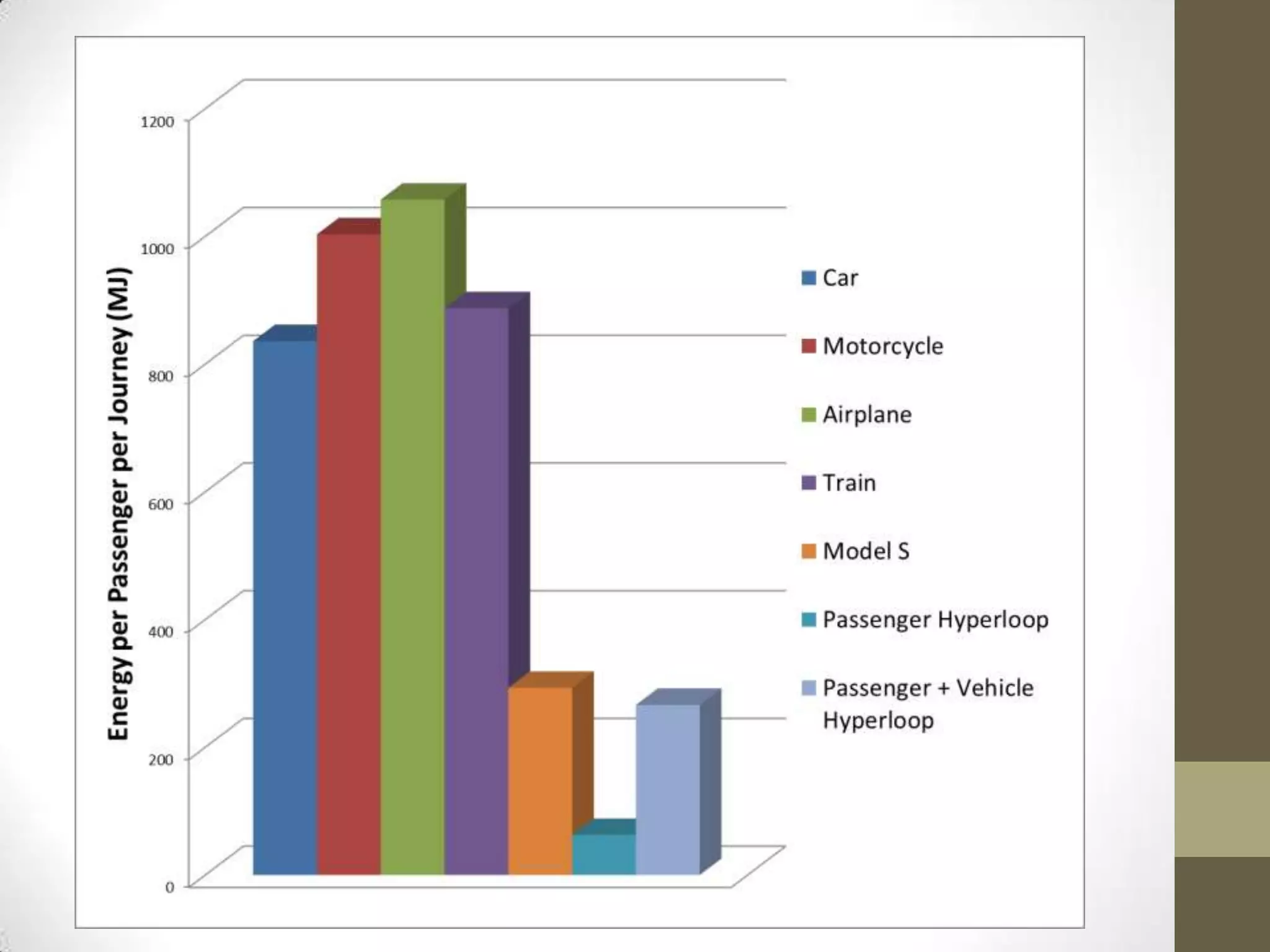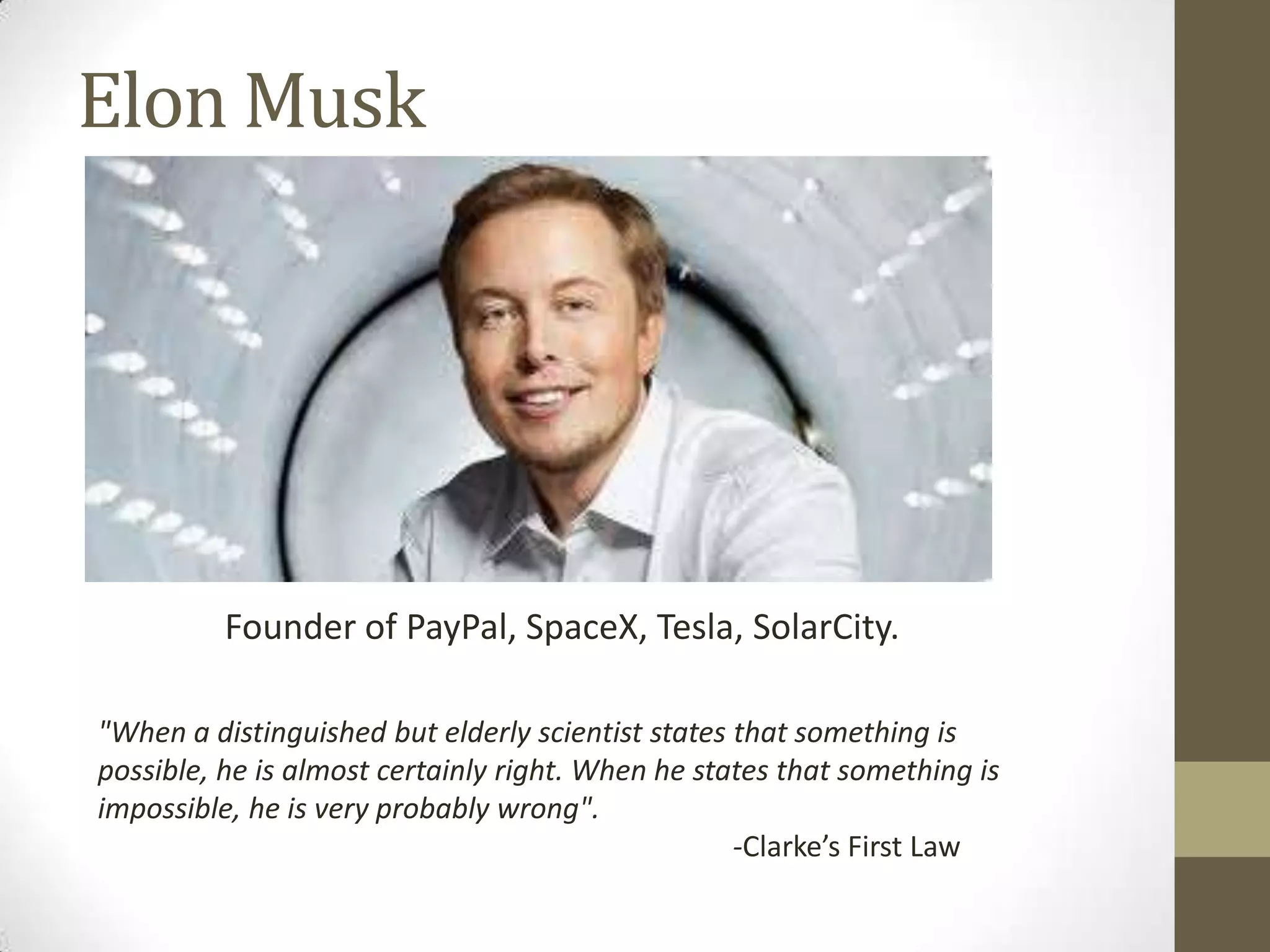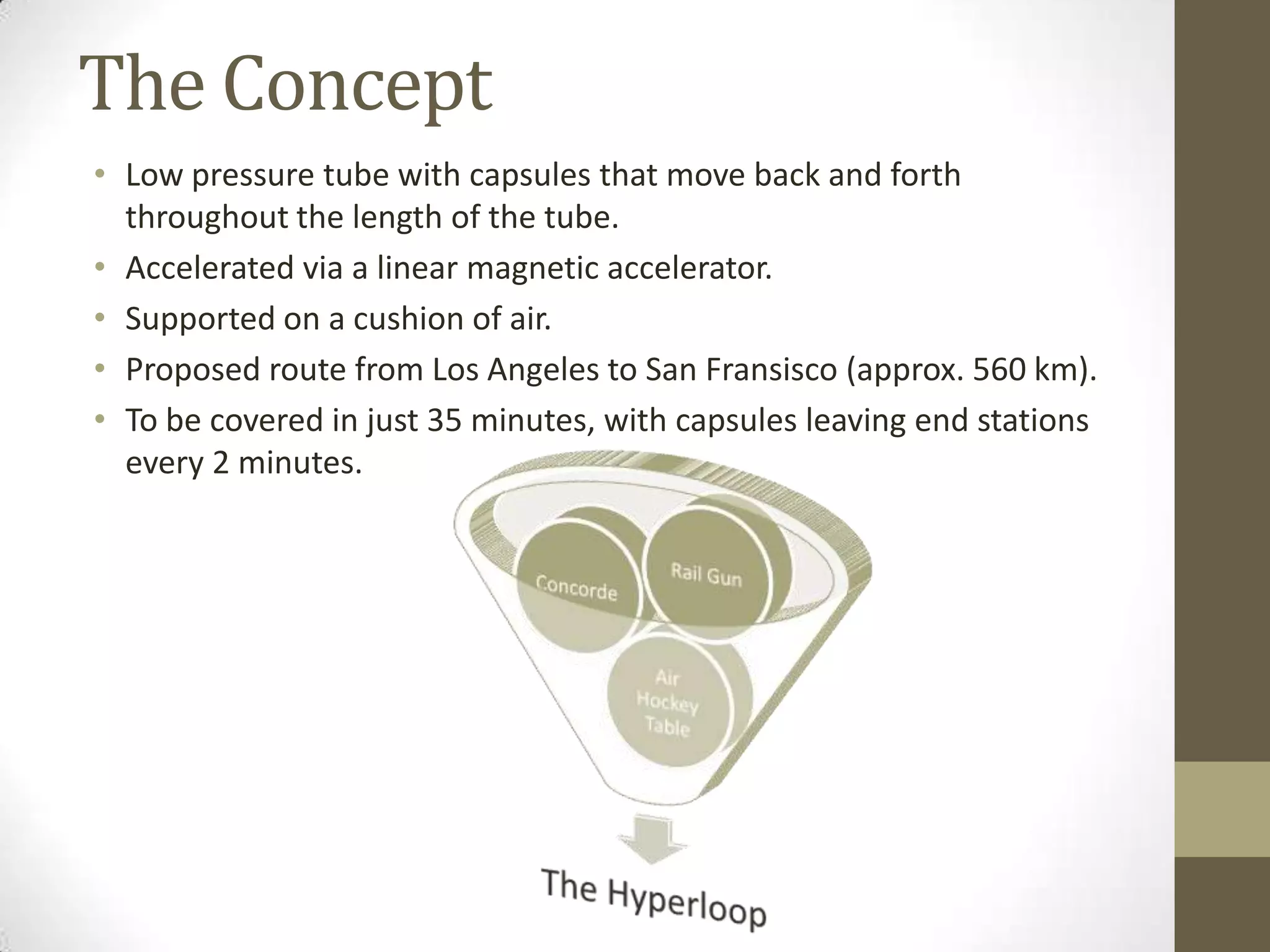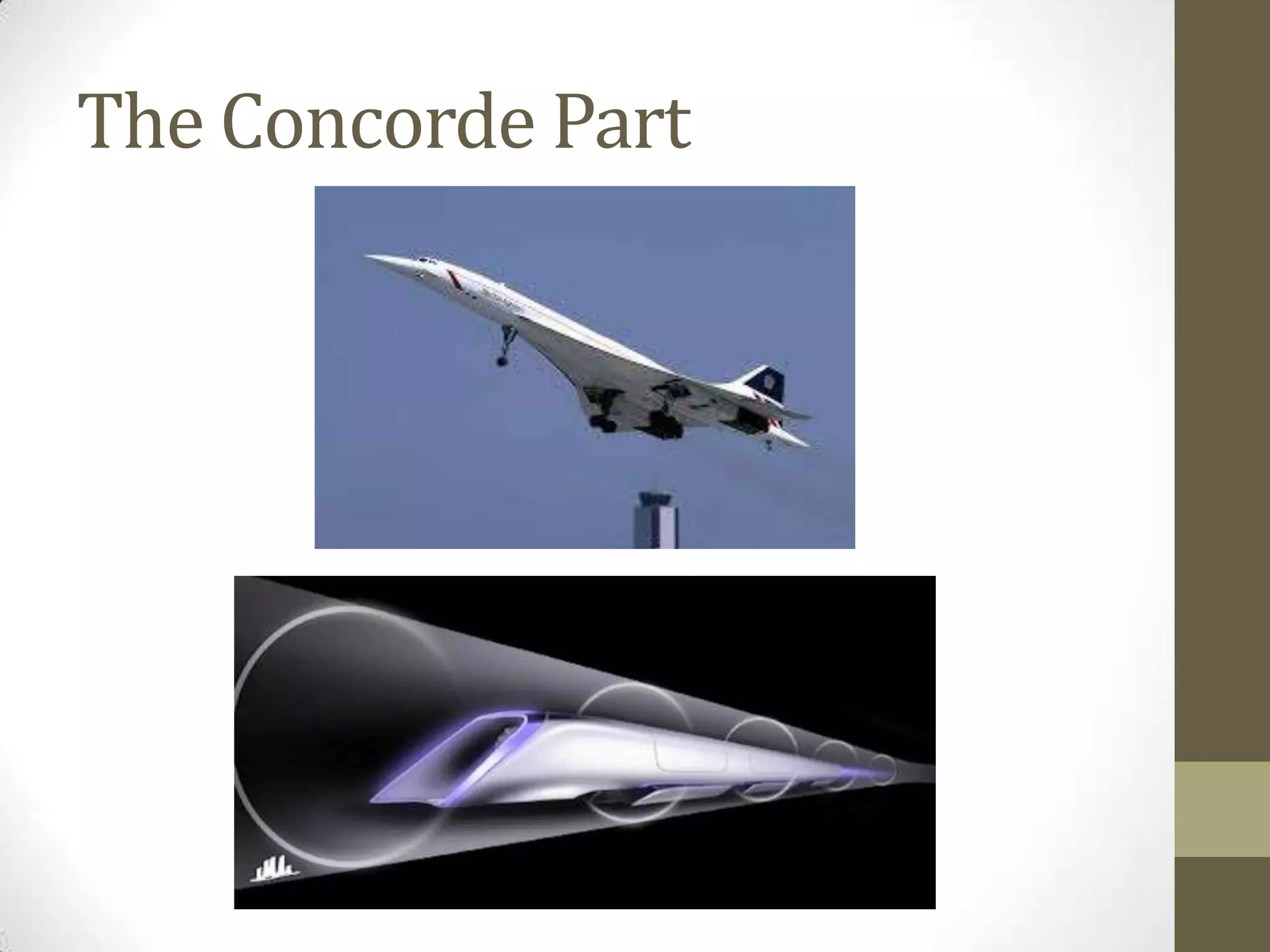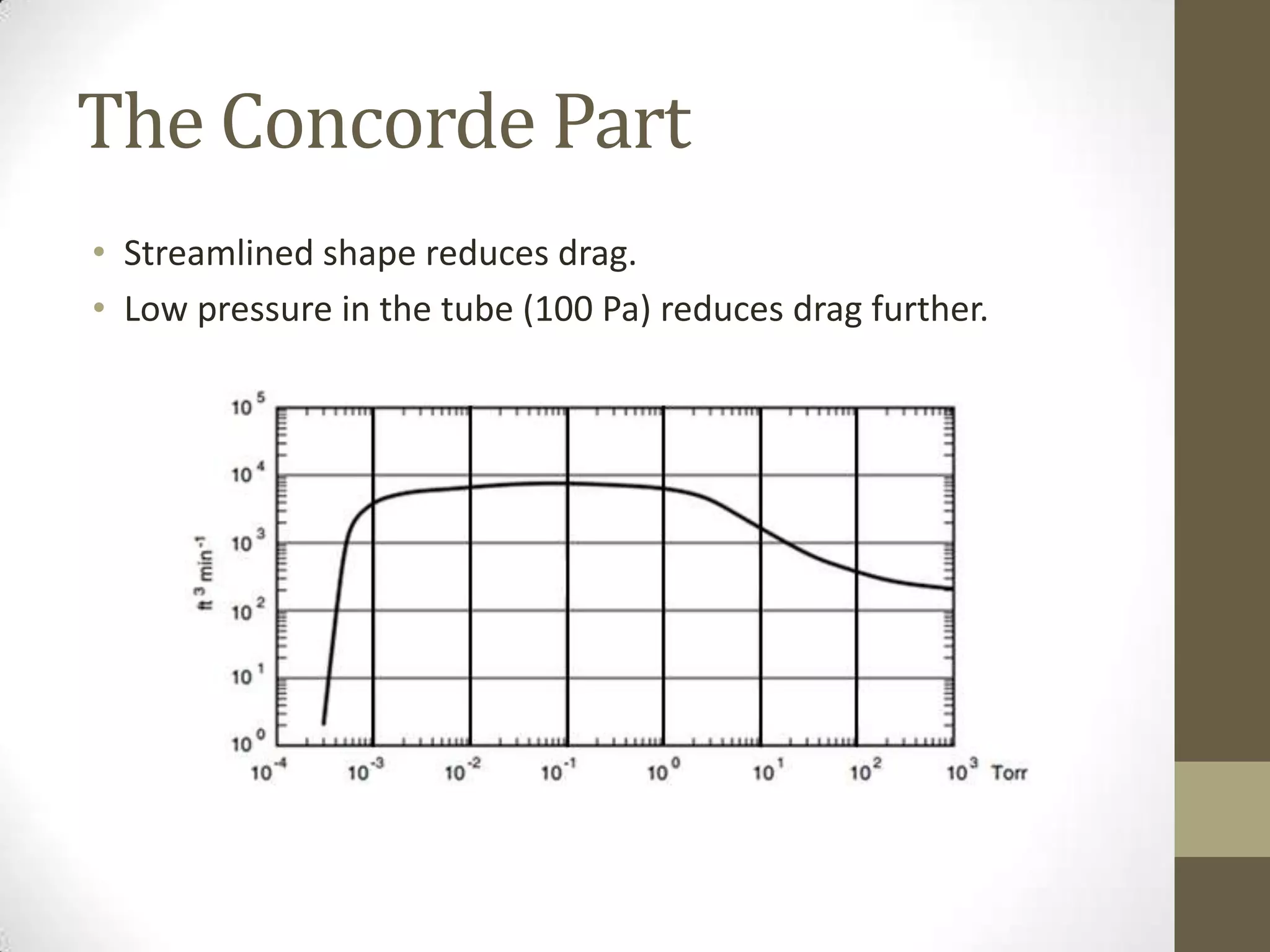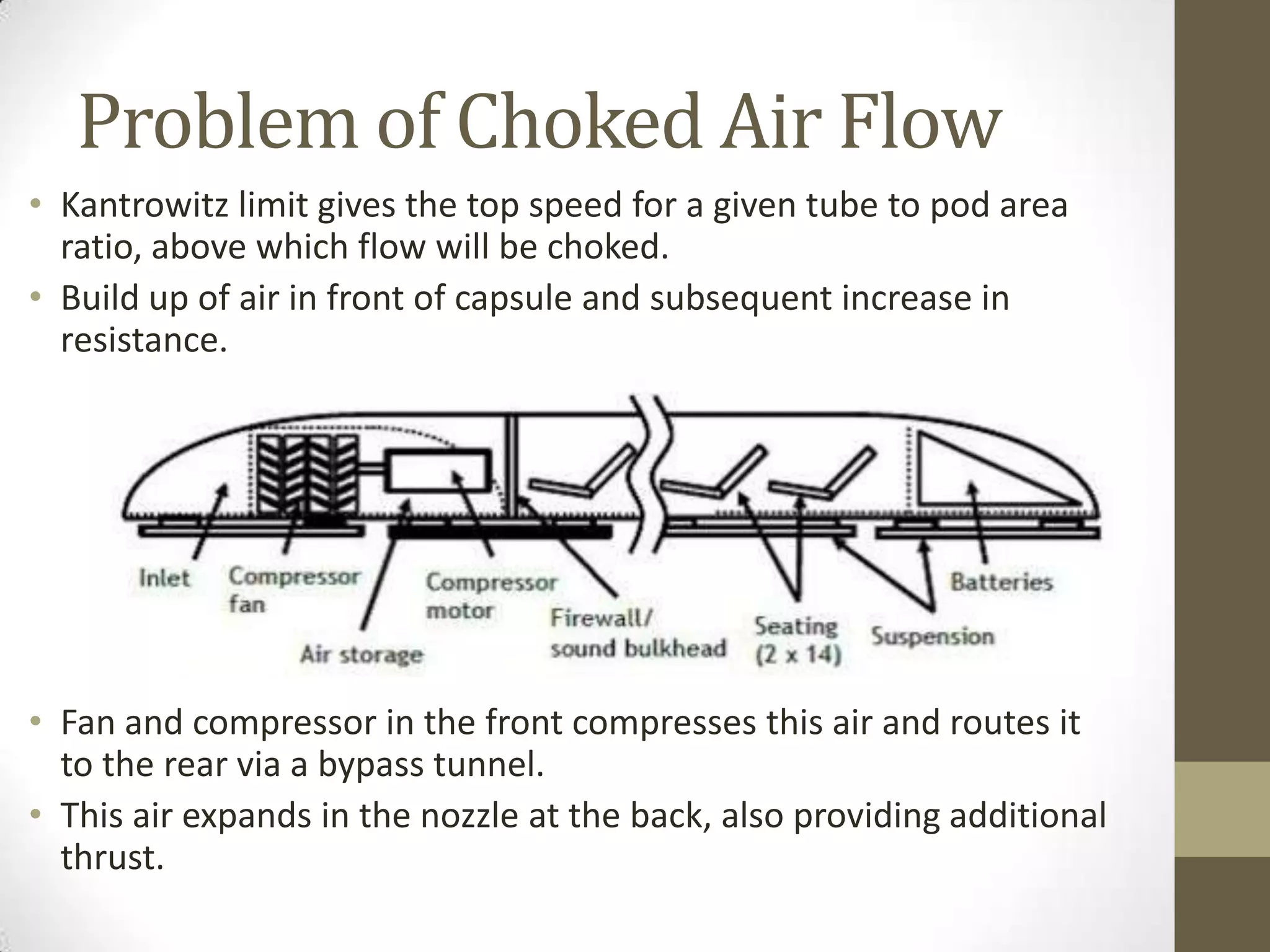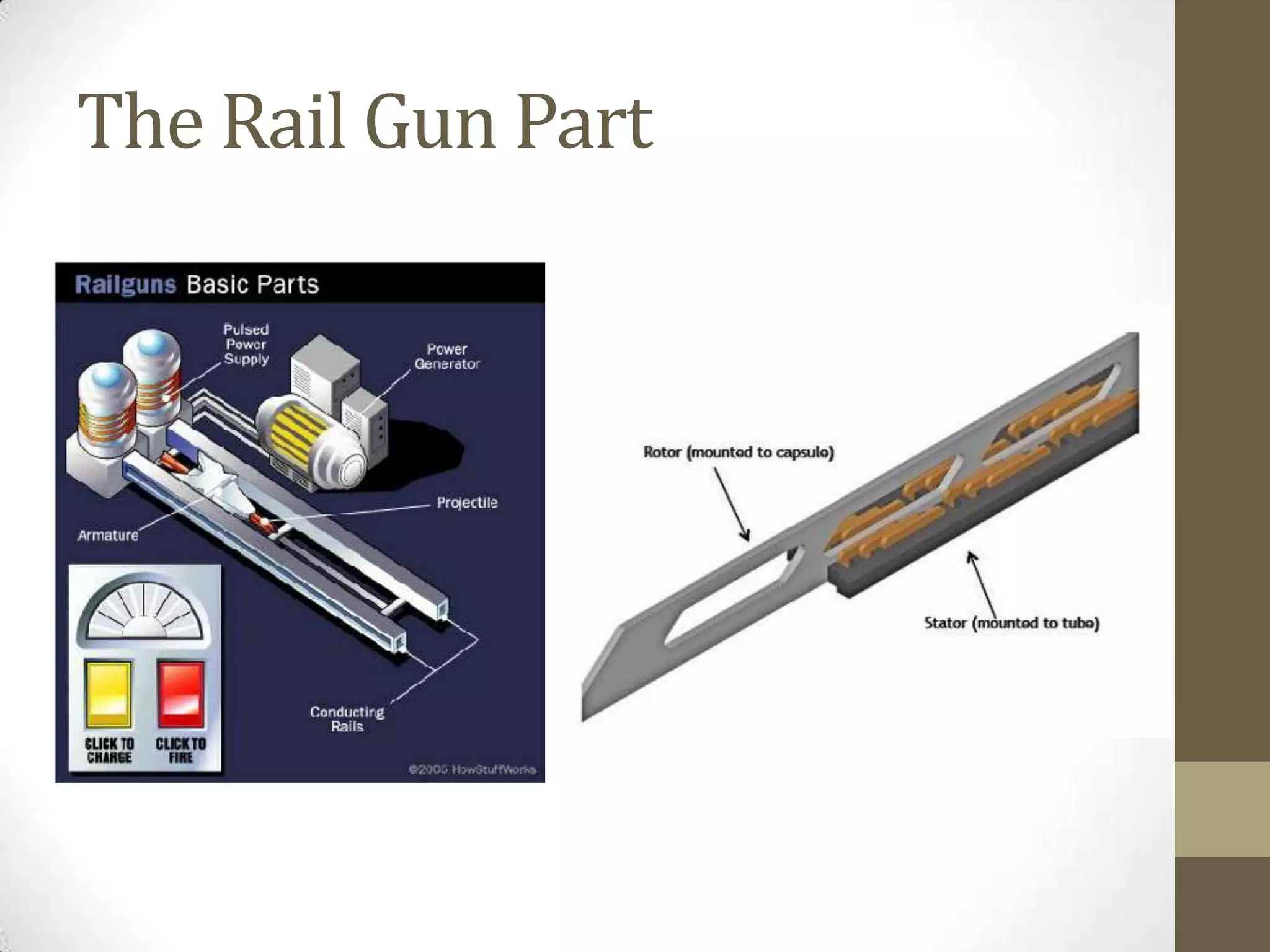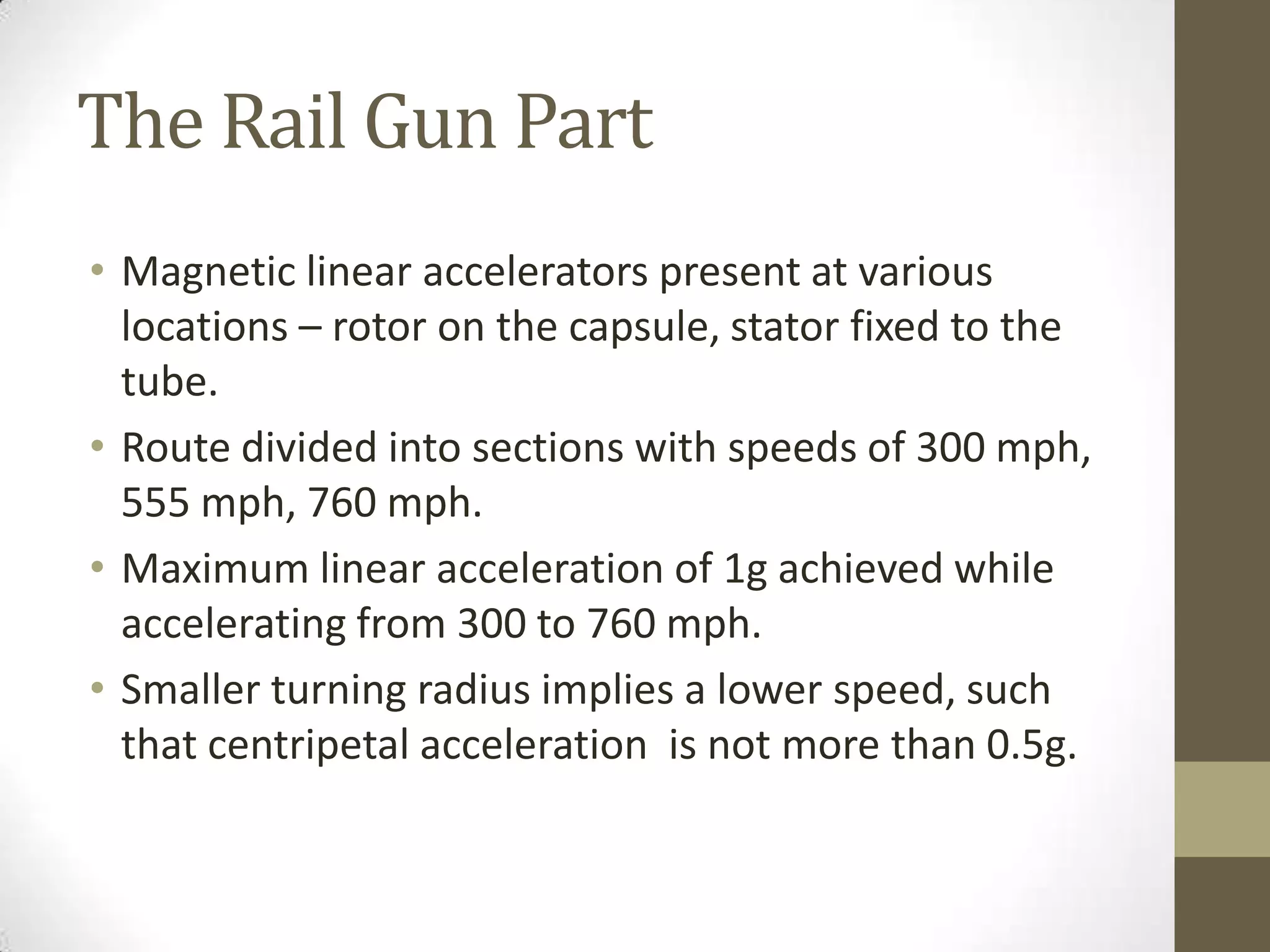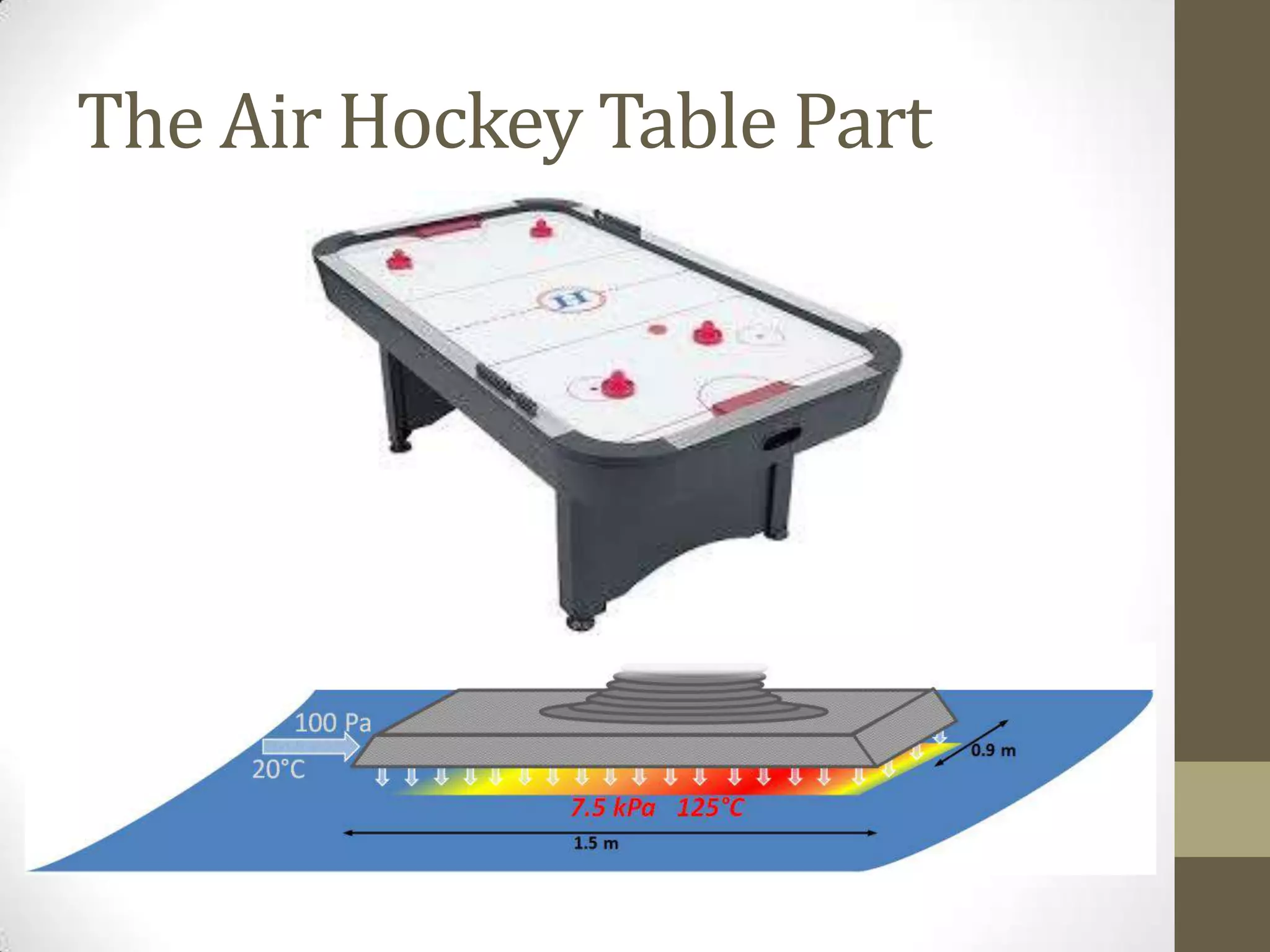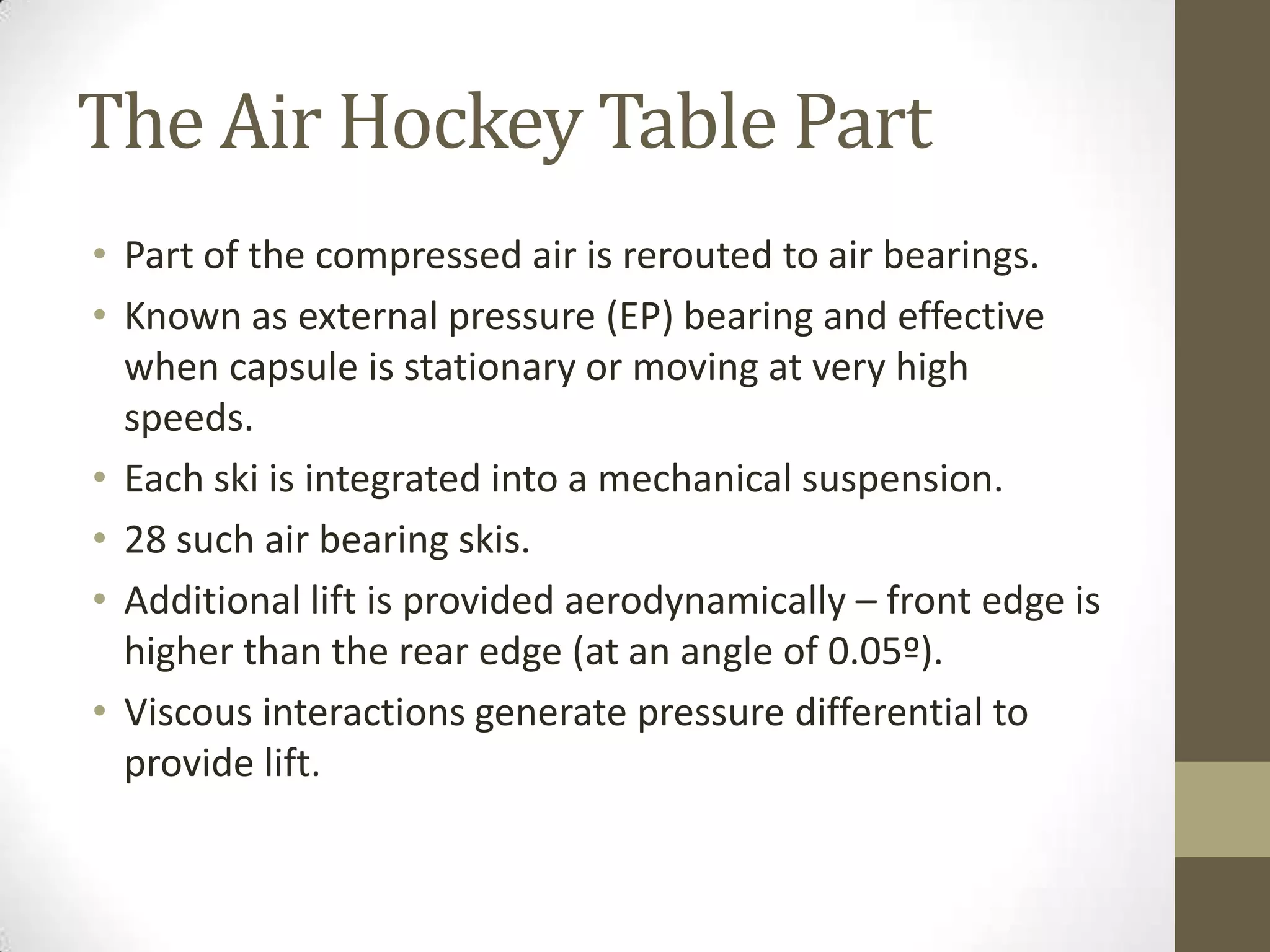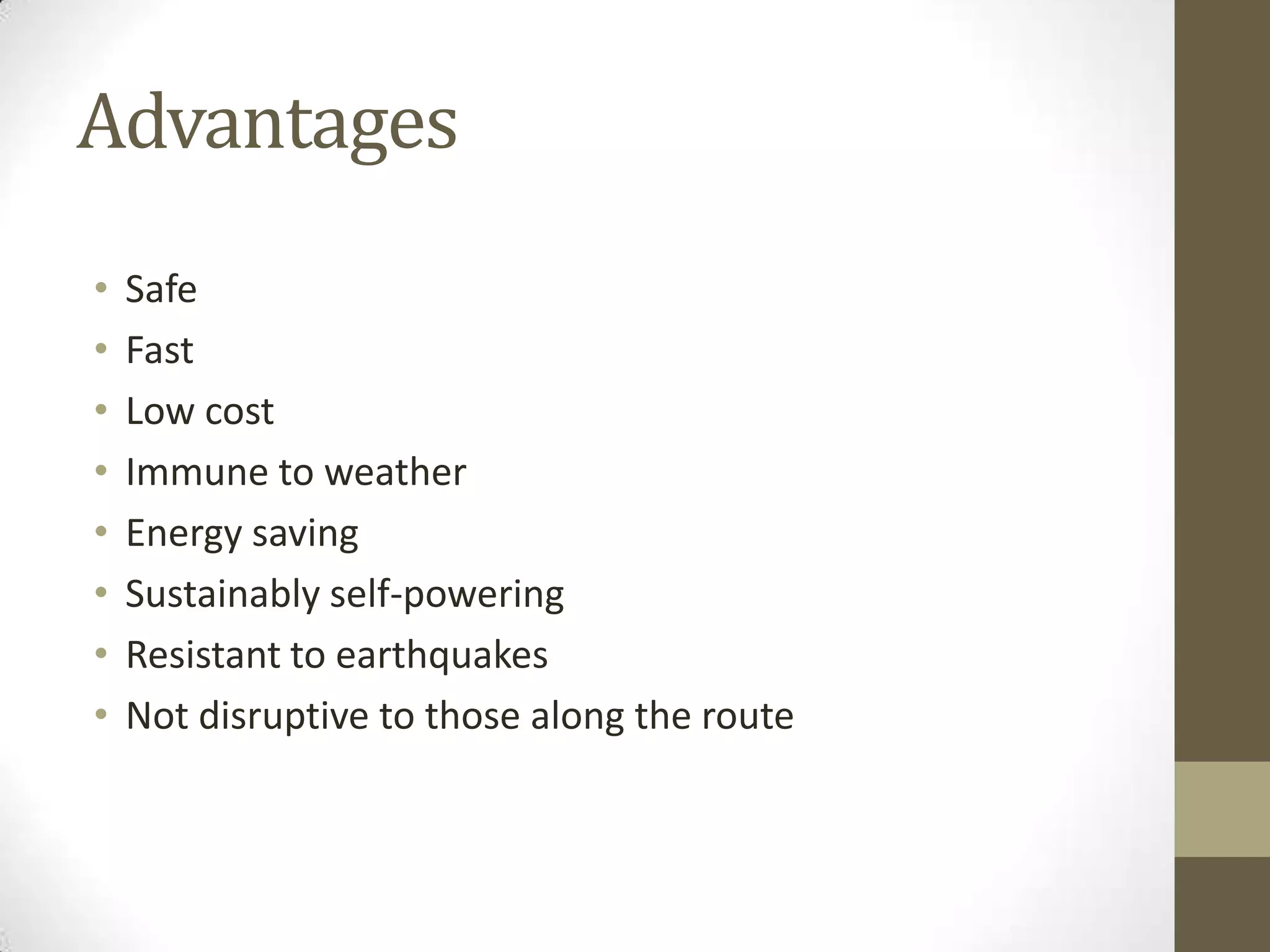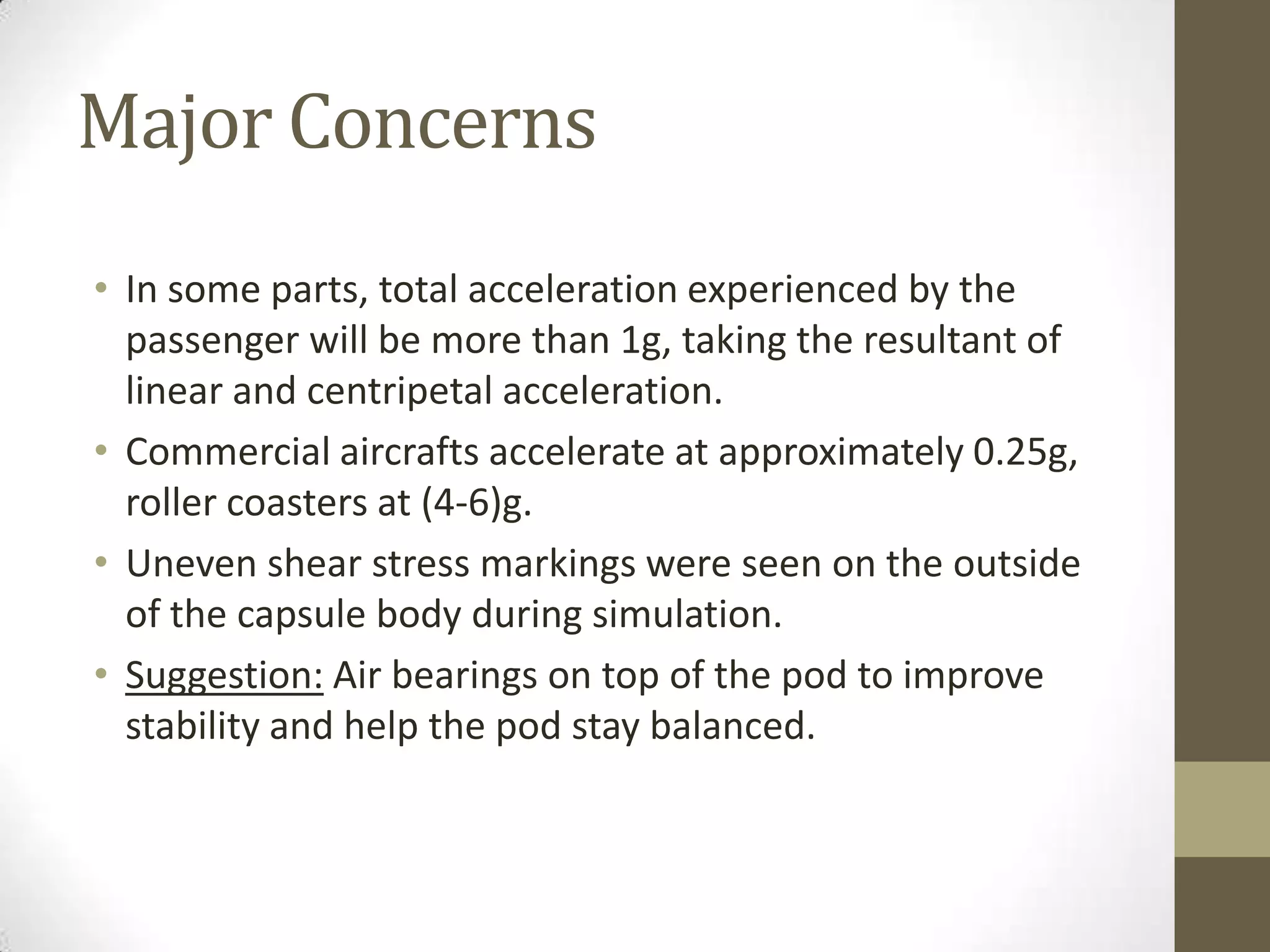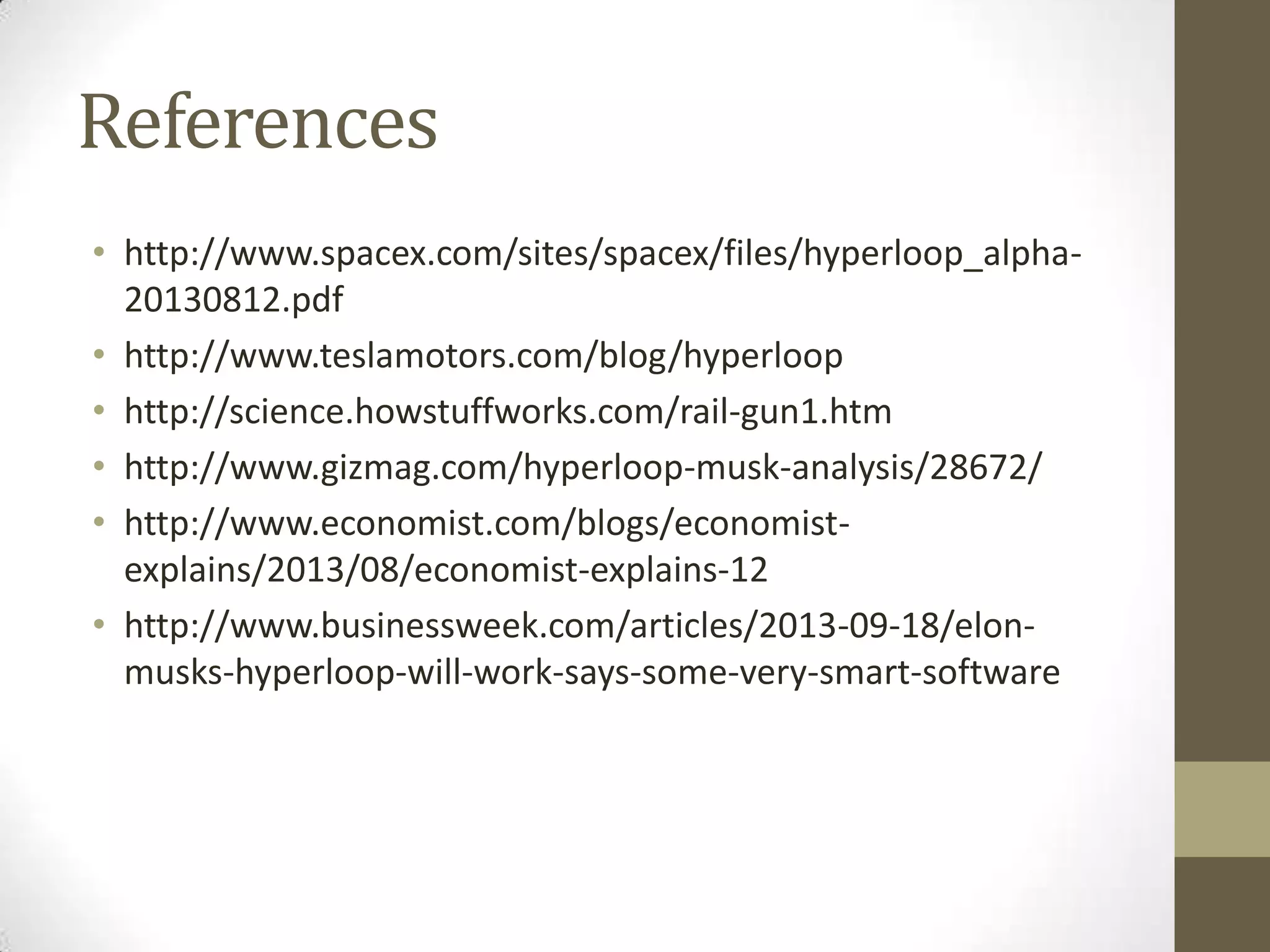The document describes Elon Musk's concept for the Hyperloop, a proposed method of transportation that would allow travel between Los Angeles and San Francisco in just 35 minutes. The Hyperloop would use a low-pressure tube with capsules that accelerate to high speeds using magnetic acceleration and air bearings. It would be faster, cheaper, and more energy efficient than existing modes of transportation like airplanes and high-speed rail. Major technical challenges include ensuring stable levitation and handling acceleration forces within safe human tolerance limits.
